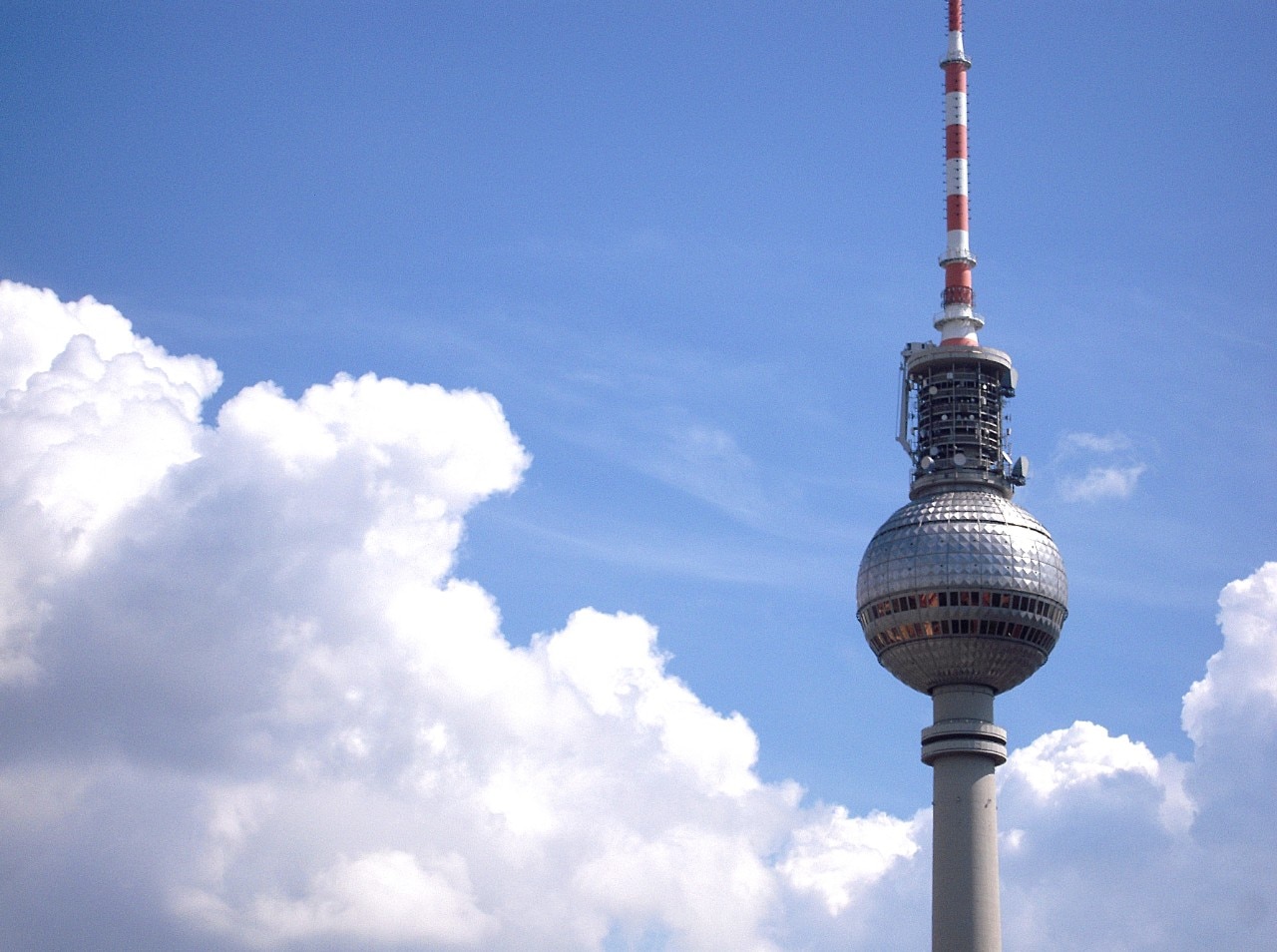
Accademia Tadini on Lake Iseo reborn with Isotec
Brianza Plastica's Isotec thermal insulation system played a key role in the restoration of Palazzo Tadini, a masterpiece of Lombard neoclassical architecture and a landmark of the art world.
- Sponsored content
Towers have always played a key role in connecting the scale of architecture with that of the landscape and territory. While in history they have been symbols of prestige, defense, or climatic stratagems, it was in the late 1800s that the tower typology discovered a new function.
With the invention of telecommunications, first Marconi, and shortly after Tesla, understood the need for a vertical element capable of acting as an antenna for the transmission and reception of radio signals. A prime example is the Wardenclyffe Tower, also known as the Tesla Tower, designed by the Serbian engineer.
From simple metal and concrete pylons, telecommunications towers started becoming landmarks for the cities in which they were built.
From there, the need to infrastructure territories with a widespread radio and telecommunication network produced an endemic proliferation of these new towers. These began to be the object of interest for the architectural world, starting experimentations with materials, technologies, and forms, transforming telecommunication towers into expressive works. Famous examples of this are the Branca Tower in Milan, designed by Gio Ponti in the 1930s, or, leaping in time, Calatrava's Torre de Telecomunicaciones de Montjuïc. In both cases, the author's language is imprinted in the forms of the structures.

From simple metal and concrete pylons, telecommunications towers started becoming landmarks for the cities in which they were built. Thus, many began to characterize skylines, such as the CN Tower in Toronto or the Berliner Fernsehturm in Berlin, until they became some of the most recognizable elements in cities.
This collection then aims to offer an excursus through history and different world geographies. The selection recounts some of the most famous and iconic architectures, rediscovering great masters of architecture, from Lucio Costa to Norman Foster, and synthesizes one hundred years of experimentation with forms and materials that, in various ways, have given prominence to this typology that has become a symbol of contemporaneity.
Opening image: Torre de Collserola, Norman Foster, Barcelona 1992. Photo by reuerendo via Adobe Stock.

1. Wardenclyffe Tower, Stanford White, New York, 1902-1917
Designed by the engineer and inventor Nikola Tesla and the architect Stanford White, it is one of the first towers to be built for wireless aerial communication. Built in New York, the tower was destined to be a revolution for transoceanic communications. However, due to various problems that arose during its construction, the Wardenclyffe Tower was demolished in 1917 without being definitively completed.
The tower consisted of a metal pylon, at the base of which a brick building served as the radio station's operational base. At the top of the tower, a hemispherical dome surmounted the metal pylon. Only 57 meters high, it can be considered the progenitor of radio station towers.
Wardenclyffe Tower, Stanford White, New York, 1902-1917. Unknown author, published in Arthur B. Reeve, "Tesla and his Wireless Age" in Popular Electricity magazine, Popular Electricity Publishing Co., Chicago, Vol. 4, No. 2, June 1911, p. 97, via Wikimedia
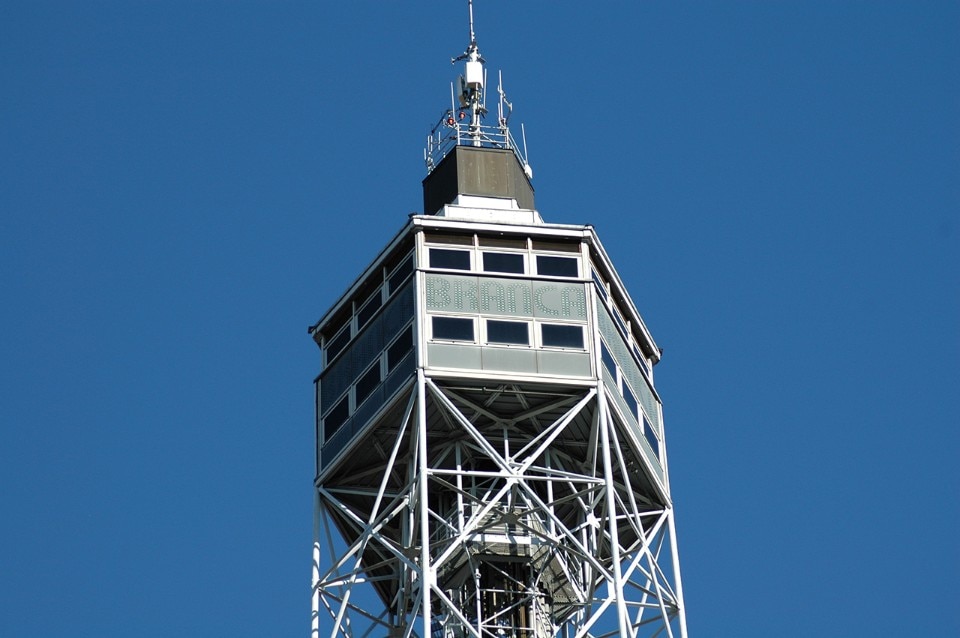
2. Torre Branca, Gio Ponti, Milan, 1933
Built for the V Triennale of Milan, Torre Branca is located inside Parco Sempione, and close to the Triennale building itself. The architecture of the tower - once called Littoria as it was commissioned by order of Mussolini - features a hexagonal trellis structure. The structure is entirely composed of tubular elements that taper upwards, giving a marked lightness to the architecture.
Torre Branca, Gio Ponti, Milan, 1933. Photo by Lorenzo Galluzzi via Adobe Stock.

2. Torre Branca, Gio Ponti, Milan, 1933
108.60 meters high, it is surmounted by a small volume that houses a restaurant and a panoramic point, the only function maintained today. On top of the volume, in 1939, the transmission system for radiovision, born in those same years, was installed.
Torre Branca, Gio Ponti, Milano, 1933. Photo by saiko3p via Adobe Stock.

3. Tokyo Tower, Tachū Naitō, Tokyo, 1958
Clearly inspired by the Eiffel Tower in Paris, Tokyo Tower was the tallest tower in the city until 2012, when a new telecommunications tower was added.
333 meters high, the tower was painted in white and orange bands to comply with Aviation regulations, making the structure stand out in terms of shape and color within the built context. Since its construction, the tower has taken on a symbolic role in the city's skyline, appearing in many Japanese television settings.
Tokyo Tower, Tachū Naitō, Tokyo, 1958. Photo by 東京太郎 via Wikimedia.

3. Tokyo Tower, Tachū Naitō, Tokyo, 1958
Given the context highly exposed to seismic risk, the Tokyo Tower was specifically designed to withstand strong earthquakes and the force of typhoons.
Tokyo Tower, Tachū Naitō, Tokyo, 1958. Photo by Takashi Images via Adobe Stock.

4. BT Tower, E. Bedford, G.R. Yeats, London, 1964
Upon its inauguration, the BT Tower was defined as the emblem of twentieth-century Britain, symbolizing the capital's technological innovation and development.
Unlike many other telecommunications towers, the BT Tower hosts several offices at the base of the building. Furthermore, the body of the architecture itself appears compact, recalling more the architecture of a skyscraper than that of a telecommunications pylon.
BT Tower, E. Bedford, G.R. Yeats, London, 1964. Photo by Property Services Agency via Wikimedia.

4. BT Tower, E. Bedford, G.R. Yeats, London, 1964
Thus, The tower sees a series of cylindrical bodies of different diameters following one another, with a reinforced concrete base and a cylinder covered with a glass curtain wall, which leaves space for a band in which antennas and repeaters are housed. Finally, the tower ends with a more protruding volume, which serves as the crowning feature of the structure
BT Tower, E. Bedford, G.R. Yeats, London, 1964. Photo by Nigel via Adobe Stock.

5. Brasília TV Tower, Lúcio Costa, Brasilia, 1965
Lucio Costa, one of the masters of Brazilian modernism, designed the telecommunications tower in Brasilia in 1965, a city for which Costa collaborated with Oscar Niemeyer to draft the urban plan.
The tower has a reinforced concrete base, in which the plastic shapes of the pillars support a fully glazed surface.
Brasília TV Tower, Lúcio Costa, Brasilia, 1965. Photo by Daderot via Wikimedia.

5. Brasília TV Tower, Lúcio Costa, Brasilia, 1965
The pillars are undoubtedly the architecture's most recognizable and characterizing element, forming a V shape that joins the mezzanine floor. Inside these is the lift system, which thus leaves the ground connection free, giving lightness to the structure.
Pillars and a glass surface constitute the base from which the metal pylon rises, reaching a height of 224 meters.
Brasília TV Tower, Lúcio Costa, Brasilia, 1965. Photo by Luan via Adobe Stock.

6. Berliner Fernsehturm, Hermann Henselmann, Berlin, 1965
Built in 1969 in Alexander Platz, in what was East Berlin, it immediately became a symbol for that part of the city.
The shape of this telecommunications tower is part of research that echoed the season of man's conquest of space. Slender and tall, the single hollow reinforced concrete pillar tapers upwards, to then be surmounted by a sphere covered in glass and metal, at the top of which antennas and repeaters are placed.
Berliner Fernsehturm, Hermann Henselmann, Berlin, 1965. Photo by JFL Photography via Adobe Stock.

6. Berliner Fernsehturm, Hermann Henselmann, Berlin, 1965
The sphere, the single characterizing element of the architecture, is thus made up of a prefabricated structure that was assembled on the ground and then lifted for installation, recounting the engineering feat that constituted the construction of the Berliner Fernsehturm. Inside the sphere, there is a panoramic point and a restaurant whose floor rotates 360° every hour.
Berliner Fernsehturm, Hermann Henselmann, Berlino, 1965. Photo by kameraauge via Adobe Stock.

7. Ostankino tower, Nikolaj Vasil'evič Nikitin, Moscow, 1967
Moscow's radio telecommunications tower, the Ostankino Tower, is one of the tallest towers in the world and, to date, the tallest free-standing structure in Russia.
The reinforced concrete architecture has a section that tapers upwards, with some overhanging glass cylinders that punctuate the vertical section of the structure.
The base, however, widens into a central body in which the vertical connection structures and an external shell are inserted which is rooted in the city ground through a covered walkway.
Ostankino tower, Nikolaj Vasil'evič Nikitin, Moscow, 1967. Photo by Вьюнов Сергей, via Adobe Stock.
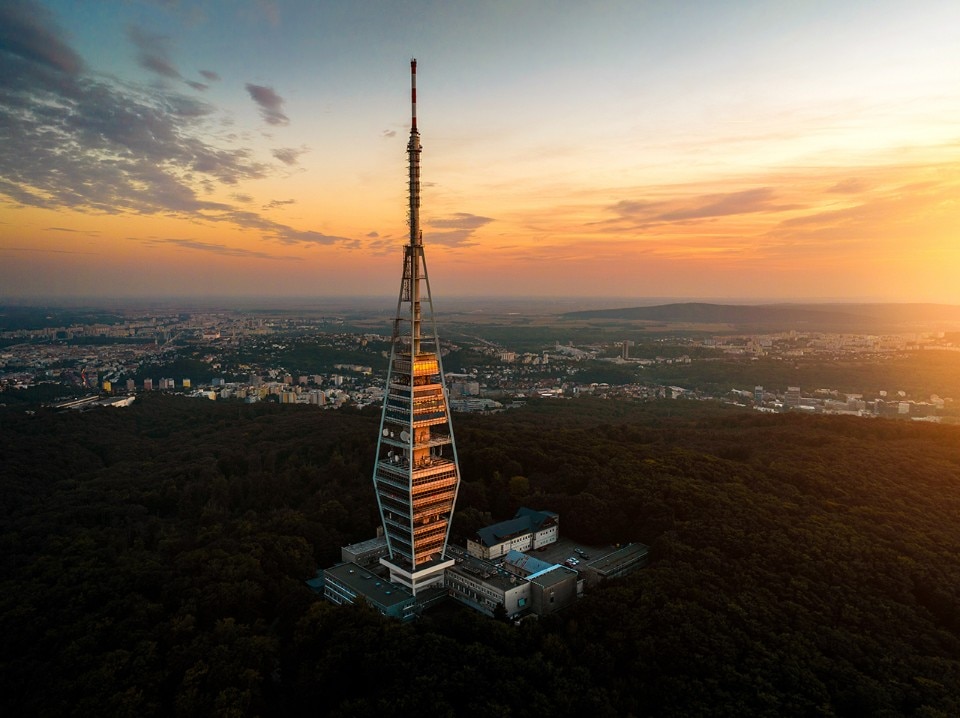
8. Kamzík TV Tower, Stanislav Májek, Jakub Tomašák, Juraj Kozák, Milan Juricaand Ján Privitzer, Bratislava, 1975
Built near the Slovak capital, Bratislava, the telecommunications tower stands within the forest that forms the park around the city.
Its recognizable shape is that of a prism in which a consecutive pyramid then surmounts an inverted truncated pyramid. The continuous steel profile makes the volume recognizable and presents an alternation between glass parts and empty portions.
Kamzík TV Tower, Stanislav Májek, Jakub Tomašák, Juraj Kozák, Milan Jurica and Ján Privitzer, Bratislava, 1975. Photo by Robert via Adobe Stock.
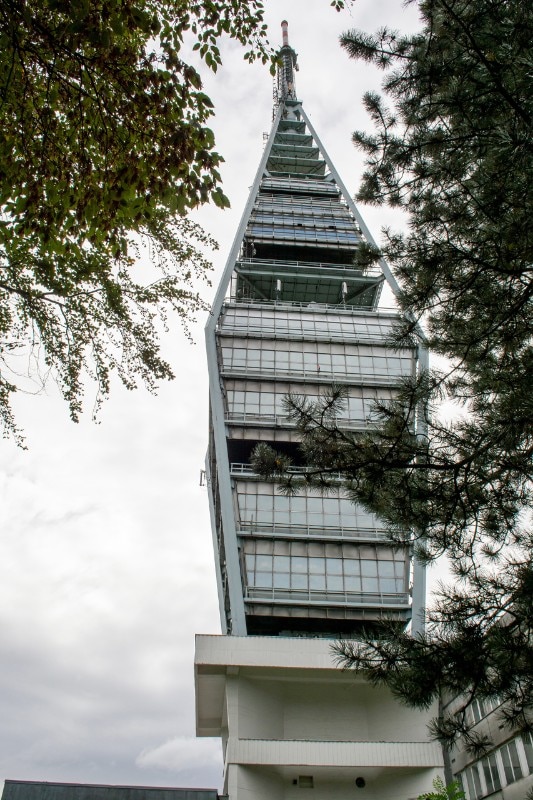
8. Kamzík TV Tower, Stanislav Májek, Jakub Tomašák, Juraj Kozák, Milan Juricaand Ján Privitzer, Bratislava, 1975
At the center of the structure, a square-based pillar acts as the only load-bearing element, used as a hook for the rest of the structure, built following the reinforced concrete pillar, starting from the top of the tower and then moving downwards.
Kamzík TV Tower, Stanislav Májek, Jakub Tomašák, Juraj Kozák, Milan Jurica and Ján Privitzer, Bratislava, 1975. Photo by Stefan via Adobe Stock.

9. Cn tower, John Andrews, Toronto, 1976
The undisputed symbol of the city of Toronto, Canada, the CN Tower stands out along Lake Ontario, towering above the nearby skyscrapers. Consisting of a single load-bearing pillar, the tower reaches 553 meters in height, tapering towards the top and hosting, in addition to antennas and repeaters, various spaces open to the public.
At the base, the load-bearing pillar has a recognizable Y shape, maintaining a hollow central heart where the systems, technical rooms, stairs, and panoramic elevators are gathered. A third of the way from the top, a circular volume characterizes the tower, inside which there is a panoramic point, a restaurant, and some service rooms.
Cn tower, John Andrews, Toronto, 1976. Photo by anderm via Adobe Stock.

10. Tashkent Tower, Y.P. Semashko, I.N. Terziev-Tsarukov, Tashkent, 1984
The Tashkent Tower was built in Uzbekistan and is the tallest telecommunications tower in Central Asia. The structure comprises three superimposed registers, divided by two circular bodies jutting out from the central volume. At the base, the tower is rooted in the ground through a white reinforced concrete structure, which recalls the forms of traditional local architecture, acting by struts for the main structure.
Tashkent Tower, Y.P. Semashko, I.N. Terziev-Tsarukov, Tashkent, 1984. Photo by ほっきー via Wikimedia.

10. Tashkent Tower, Y.P. Semashko, I.N. Terziev-Tsarukov, Tashkent, 1984
As it rises, it decreases its section, visually lightening the work. The volumes placed between the registers described are finally characterized on the façade by a design that recalls a geometrized arabesque.
Tashkent Tower, Y.P. Semashko, I.N. Terziev-Tsarukov, Tashkent, 1984. Photo by Collab Media, via Adobe Stock.

11. Riga Radio and TV Tower, Kims Nikuradze, Nikolajs Sergijevskis, Viktors Savčenko, Riga, 1989
The Riga Radio and TV Tower stands on an island along the river of the Latvian city. Particularly slender, the tower seems to rest lightly on the ground. Three pillars with a rectangular section bend softly, lifting the opaque body of the tower and containing all the vertical connection systems.
Riga Radio and TV Tower, Kims Nikuradze, Nikolajs Sergijevskis, Viktors Savčenko, Riga, 1989. Photo by Visgean, via Wikimedia.

11. Riga Radio and TV Tower, Kims Nikuradze, Nikolajs Sergijevskis, Viktors Savčenko, Riga, 1989
This contrasts the white color of the pillars, which continue up to the top like a calligraphic feature of the architecture. In fact, the use of COR-TEN panels restores a ferrous tone to the central body which, marked by the vertical junction elements of the panels, rises and tapers. To conclude the tower, the cylindrical antenna surmounts the body of the architecture with equal lightness, creating an elegant and recognizable tower that stands out in the territory.
Riga Radio and TV Tower, Kims Nikuradze, Nikolajs Sergijevskis, Viktors Savčenko, Riga, 1989. Photo by MDF, via Adobe Stock.

12. Torre de Collserola, Norman Foster, Barcelona, 1992
Together with the telecommunications tower designed by Calatrava, Foster's Torre de Collserola was built in view of the Olympic Games hosted by the Catalan city.
The work is the result not only of important engineering work but also of a clear high-tech language, which has always had Norman Foster as one of its greatest exponents. The tower, which has a single central pylon for vertical connection, is characterized by a circular and projecting volume, placed at the center of the structure, while the top part and the part relating to the ground remains as a skeleton element.
Torre de Collserola, Norman Foster, Barcelona 1992. Photo by reuerendo via Adobe Stock.

12. Torre de Collserola, Norman Foster, Barcellona, 1992
To give stability, but also resulting in linguistic elements of the project, a series of tie rods are inserted, which conclude the volume of the project and ensure that the central volume appears to be hanging from the pylon itself.
Torre de Collserola, Norman Foster, Barcellona 1992. Photo by Martin Abegglen via Wikimedia.
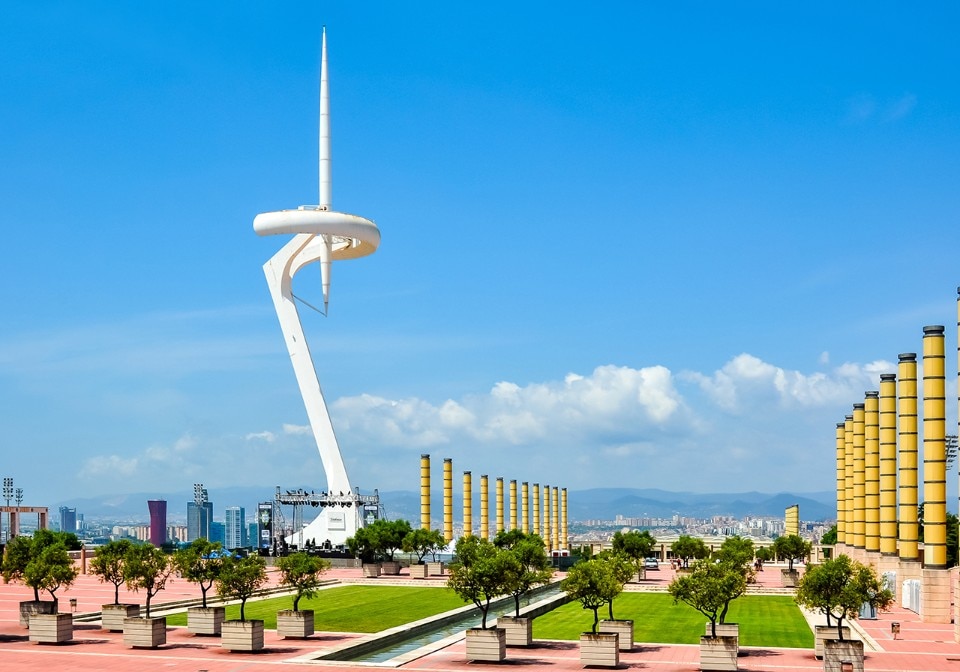
13. Torre de telecomunicaciones de Montjuïc, Santiago Calatrava, Barcellona 1992
Built for the Barcelona Olympic Games, the Montjuïc Telecommunications Tower has a unique shape compared to the typological variants collected here. Its profile, in fact, recalls the element of the Olympic torch, a clear reference to the games.
Torre de telecomunicaciones de Montjuïc, Santiago Calatrava, Barcellona 1992. FPhoto by Mistervlad, via Adobe Stock.
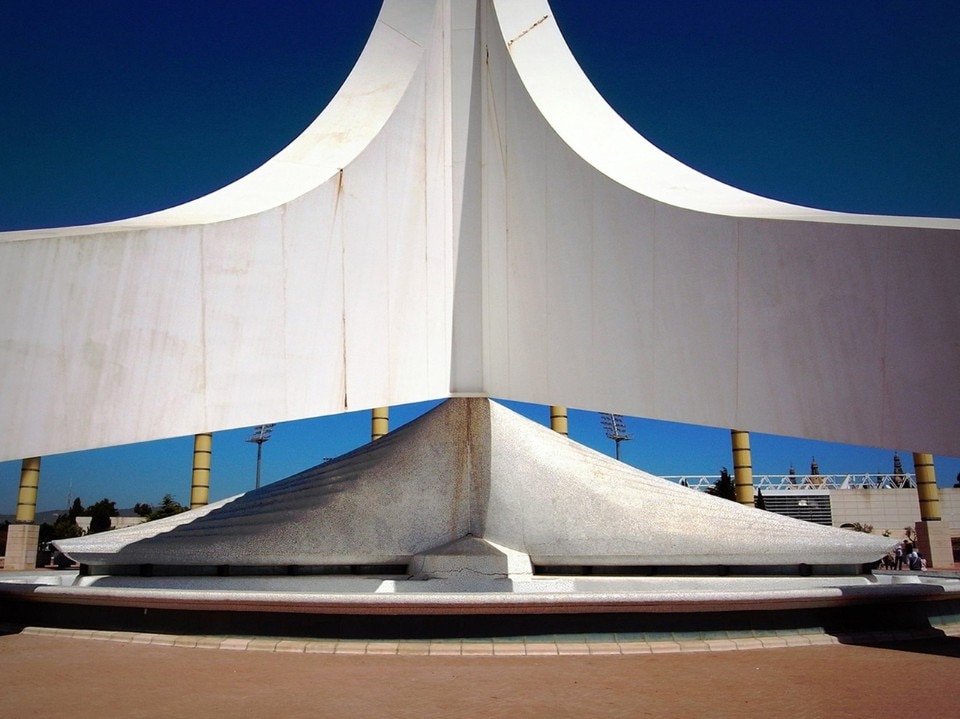
13. Torre de telecomunicaciones de Montjuïc, Santiago Calatrava, Barcellona 1992
If its development in height composes a plastic game, the tower also studies its rooting to the ground, building a circular body, the roof of which is finished in trencadis as a tribute to the works of the Catalan architect Gaudì.
Entirely white, the Torre de telecommunications de Montjuïc thus also becomes an inhabited sculpture, which blurs the boundaries between architecture, art and technology, constituting a unique landmark.
Torre de telecomunicaciones de Montjuïc, Santiago Calatrava, Barcellona 1992. Photo by Victoriano Javier Tornel García, via Wikimedia.

14. Kuala Lumpur tower, Achmad Moerdijat, Kuala Lumpur, 1994
Symbol of the city of Kuala Lumpur, the telecommunications tower resembles the shaft of a column. Tapering towards the top, fluted and white, it then sees a giant capital with an earthy color, which is surmounted by a volume containing the tourist spaces, a panoramic restaurant, and the broadcast antenna.
Kuala lumpur tower, Achmad Moerdijat, Kuala Lumpur, 1994. Foto di Azreey, via Wikimedia.

14. Kuala Lumpur tower, Achmad Moerdijat, Kuala Lumpur, 1994
Furthermore, the same tower is used as an astronomical observatory for the lunar phases linked to the Muslim calendar, thus also being a reference point for religious activities.
Kuala lumpur tower, Achmad Moerdijat, Kuala Lumpur, 1994. Foto di Wikieditkid, via Wikimedia.

15. Oriental pearl tower, Jia Huan Cheng, Shangai, 1995
Built in Shanghai in the mid-1990s to cope with broadcast congestion, the Oriental Pearl tower creates an iconic element within the Chinese city. A succession of spheres of different sizes characterizes the height development of the structure, interpreting the culture and typical atmosphere of the place through the forms of architecture.
Oriental pearl tower, Jia Huan Cheng, Shangai, 1995. Photo by Oleksandr Dibrova, via Adobe Stock.

15. Oriental pearl tower, Jia Huan Cheng, Shangai, 1995
A set of pillars, diagonal and vertical, constitutes the connection to the ground, where a sphere of considerable dimensions then leaves room for just three pillars, which envelop the succession of spheres up to the top, where a further sphere of larger dimensions stands out. The colors of the concrete are thus interrupted by red glass bands and gray metal elements, giving the spheres their autonomy with respect to the vertical structure, echoing the figure of the pearls, which gives its name to the tower itself.
Oriental pearl tower, Jia Huan Cheng, Shangai, 1995. Photo by shankar s. via Wikimedia.

16. Zhuzhou Television Tower, Jianzhong He and Yue Chen, Zhuzhou, 1999
Part of the tourist development of the Chinese city, the Zhuzhou Television Tower, is made up of three parts. The first is the backbone of the architecture: a central pillar in reinforced concrete, at the top of which a sphere hosts the tourist activities. Around the central pillar, a metal structure creates a lightweight exoskeleton, which defines a tapered shape which continues beyond the sphere to generate the flagpole for radio transmissions. Finally, the exoskeleton widens at the structure's base and contains a glazed base building that roots the tower to the ground.
Zhuzhou Television Tower, Jianzhong He and Yue Chen, Zhuzhou, 1999. Photo by Lili.Q, via Adobe Stock.

17. Zhongyuan Tower, Renle Ma, Zhengzhou, 2007
Strongly figurative, the Zhongyuan broadcast tower resembles a plum blossom. In fact, starting from the ground, a series of cylindrical elements rise, which, as if they were stems of a flower, twist around the central and load-bearing glass element, culminating then with the top volume, which takes up the image of plum petals. Here, the shape of the surface is that of a hyperbolic parabola, whose glass finish recalls the petals' colors. The tower is thus a symbol of spring, returning the figure of the flower through the telecommunications tower.
Zhongyuan Tower, Renle Ma, Zhengzhou, 2007. Photo by Windmemories, via Wikimedia

18. Milad tower, Mohammad Reza Hafezi, Teheran, 2008
Built in the capital of Iran, the Milad tower recalls the tradition of Persian architecture through the interweaving of the base and crowning structure of the tower itself. The shaft is tapered and made of concrete, thus showing the characteristics of architecture in the two elements.
Milad tower, Mohammad Reza Hafezi, Teheran, 2008. Photo by PR ART, via Adobe Stock.

18. Milad tower, Mohammad Reza Hafezi, Teheran, 2008
Furthermore, even in the case of the Milad Tower, the architecture recalls the image of a giant order column. In fact, not only does the volume at the top seem to recall a capital, but it too is divided from the shaft by a further element that clearly refers to the capitals of the historical architecture present in the area.
Milad tower, Mohammad Reza Hafezi, Teheran, 2008. Photo by Matyas Rehak, via Adobe Stock.

19. Tokyo Sky Tree, Tadao Ando, Tokyo, 2012
The Tokyo Sky Tree, one of the tallest structures in the world, is composed of a central pillar, covered in a network of metal elements which, tapering, make up the tower's volume. Thanks to this intertwining, the tower manages to seem robust and powerful but, at the same time, highly tectonic.
Tokyo Sky Tree, Tadao Ando, Tokyo, 2012. Photo by Kakidai, via Wikimedia.

19. Tokyo Sky Tree, Tadao Ando, Tokyo, 2012
This vertical development is then joined by a volume at the top: an inverted truncated pyramid, which seems to levitate in the sky, supported by a tangle of metal elements.
Tokyo Sky Tree, Tadao Ando, Tokyo, 2012. Photo by Akonnchiroll, via Wikimedia.

20. Çamlıca Tower, Melike Altınışık, Istanbul, 2020
Recently completed in the Turkish capital, the Çamlıca Tower seems to be moved by the wind. The soft shapes designed by the Melike Altınışık Architects studio make this telecommunications tower a unique formal invention. They are a clear reference to the dynamic and fluid poetics already explored by Altınışık during his collaboration with Zaha Hadid Architects.
Çamlıca Tower, Melike Altınışık, Istanbul, 2020. Photo by Mario Montero Arroyo, via Adobe Stock.
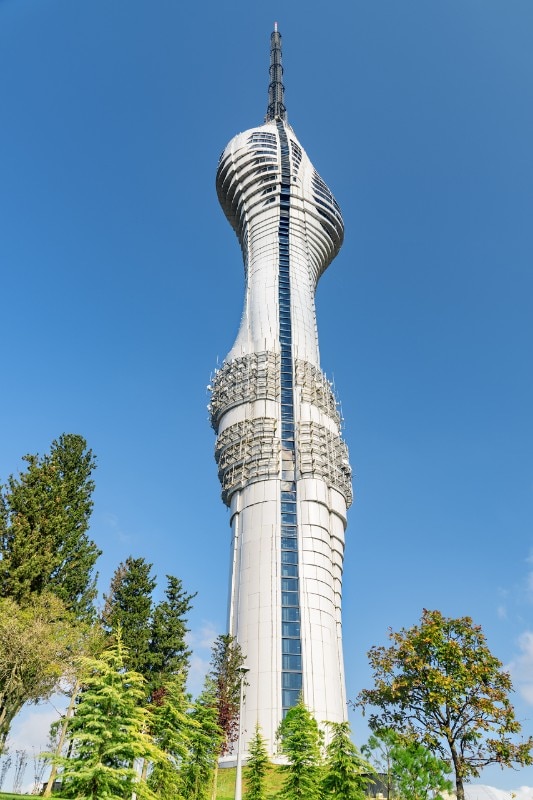
20. Çamlıca Tower, Melike Altınışık, Istanbul, 2020
Mostly opaque, the glass portions open inside the white cladding realling ship windows, relating the architecture to the surrounding landscape at 360 degrees. Sculptural in its three-dimensionality, the Çamlıca Tower is a continuous volumetric discovery that offers a new dimension on every side.
Çamlıca Tower, Melike Altınışık, Istanbul, 2020. Photo by efired, via Adobe Stock.

A home where wood is synonymous with innovation
Is there such a thing as a fine and enveloping parquet, warm and refined, but also easy to install and sustainable? The answer comes from Garbelotto.
- Sponsored content



